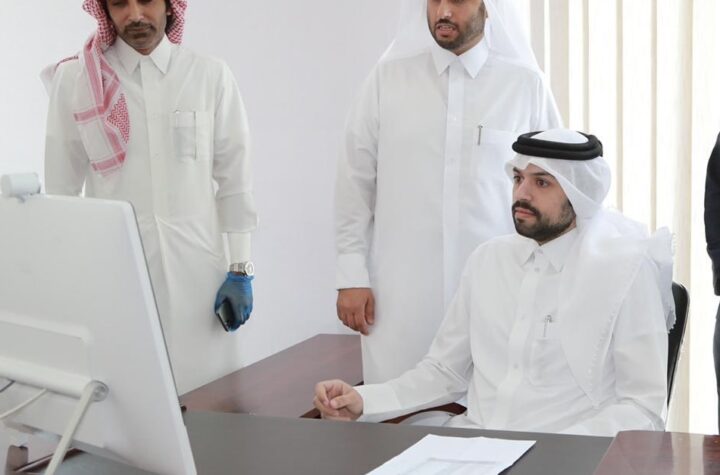

The Egyptian Ministry of Tourism and Antiquities claim the statues of two sphinxes were originally about 26 feet (eight metres) when they were built for King Amenhotep III. The Egyptian-German archaeological mission led to the discovery of the two spectacular statues that were built for the 18th-dynasty king. He reigned from about 1390BC to 1353BC, and his dynasty is known for its peace and prosperity.
The team made the discovery in the ancient capital of Thebes (modern-day Luxor) at the mortuary temple of King Amenhotep III.
The Egyptian Ministry of Tourism and Antiquities said in a statement on January 13 that it was dubbed “Temple of Millions of Years” by ancient Egyptians.
The sphinx-like Amenhotep III sculptures are known as colossi.
The Colossi of Memnon and Amenhotep III Temple Conservation Project started way back in 1998 and it has also uncovered ruins of columns and walls at the mortuary temple.
Ancient Egyptians had decorated these with ceremonial and ritual scenes, Al-Monitor reported.
The two colossi depict Amenhotep III wearing a mongoose-shaped headdress, a royal beard and a broad necklace.
And a restoration unveiled an inscription across the chest of one of the colossi that read “the beloved of Amun-Re”.
This is a reference to Amenhotep III – Tutankhamun’s grandfather.
Egyptologist Hourig Sourouzian, head of the archaeological mission, told Al-Monitor: “This temple housed a large number of statues, models and wall decorations before it was hit by a devastating earthquake in 1200BC.”
The archaeologists also came across three well-preserved statues of the powerful goddess Sakhmet.
READ MORE: World holds breath as Ukraine to fire rocket amid Russia tension
He added: “The depictions of this festival show the king on his throne in full strength, with the crowds around him happy and excited, waiting for his speech promising them another 30-year reign full of prosperity and opulence.
“On this occasion, the king would also make offerings to the gods.”
After surveying and investigating the ruins, the researchers now plan to put all of the newly documented artefacts back in their original spots within the temple.
Mr Sourouzian said the team will then manage the site and discuss how to best preserve it going forward.





More Stories
POLL: Would you install a hydrogen-ready boiler in your home?
Hearses line the streets of Beijing as China’s Covid crisis causes crematorium backlog
London Defender Person Of The Year Is Genius Inventor Andre Gray 2022